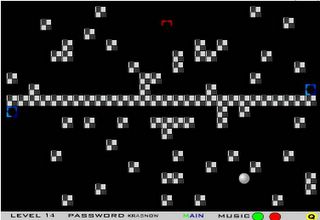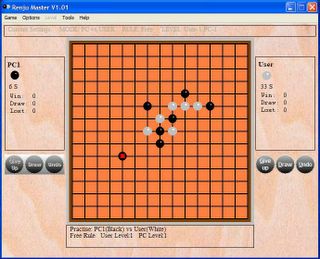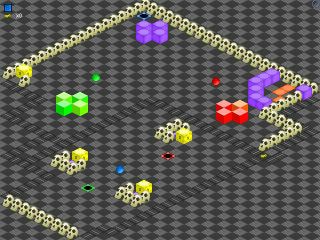Tube Twist
Name: Tube Twist
Author: 21-6 Productions
License: Commercial
Website: http://www.tubetwist.com/
Tube Twist is an Incredible Machine like game which I kept going back and forth on. At times, I really enjoyed working its puzzles, and there is something about it that kept piquing my interest. Other times, I found it irritating and aggravating, and swore I would never play it again. However, I kept coming back to it.

In Tube Twist, you have to piece together a labyrinth of tubes which guide balls (called macrotons) from their starting tubes (injector tubes) to the exits (reactor tubes). Each level (experiment) starts with one or more injector tubes, the same number of reactor tubes, and some other fixed items. In the tube tray at the bottom are the items which you get to place on the board. Your task is to figure where to place them and with which orientation so that the macrotons will make it to the reactor tubes of the appropriate color. Some levels also contain checkpoint tubes which must be passed through in order to successfully complete an experiment.
There are 36 items in Tube Twist which are slowly introduced as you work your way through the experiments. There are too many items to describe here. I will mention a few to give you a flavor for the game. One of the basic items is the accelerator tube which accelerates any macroton passing through it and helps them overcome gravity. Another is the bowl which acts like a funnel capturing flying macrotons and directing them down its lower opening. Then there is the cannon which fires out at a high rate of speed any macroton that happens to enter it. The variety of the items is impressive.
There are many good aspects to Tube Twist. The graphics, audio, menus, and presentation are excellent and very professionally done. There is even a fun back story explaining why you have to solve these experiments. There are a total of 80 experiments to complete, spread over 5 ages. You have to complete all experiments in an age before gaining access to those in the next age. The experiments are varied and generally increase in difficulty. However, there were a couple of experiments for which my solution seemed to be a short circuit. I did not use many of the items, either fixed or from the tube tray. I am willing to bet the designer of the experiment did not foresee my solution.
The physics model in Tube Twist is quite sophisticated. Well this might sound like a great feature, it turns out to be the major problem with Tube Twist. It is nearly impossible to determine with logic alone whether a solution will work or not. There is a lot a trial and error necessary. It goes something like this. Will the macroton make up that sequence of tubes? Give it a try. Well... it didn't make it up. Ok, I need to put an accelerator tube in there. I can steal one from over there. Let's see if that works. And so on. It can get a bit tiring. For several experiments, I knew I had the correct basic idea, but had to exhaust a bit to get just the right configuration. This is the aggravating part.
So what is my final opinion? I am glad I purchased and played it, but Tube Twist does have it faults. In any case, it passed the dollar an hour test (cost/hours of playtime).
A some somewhat similar game is Piper. It is freeware game which won the Game Creator contest last Summer.









